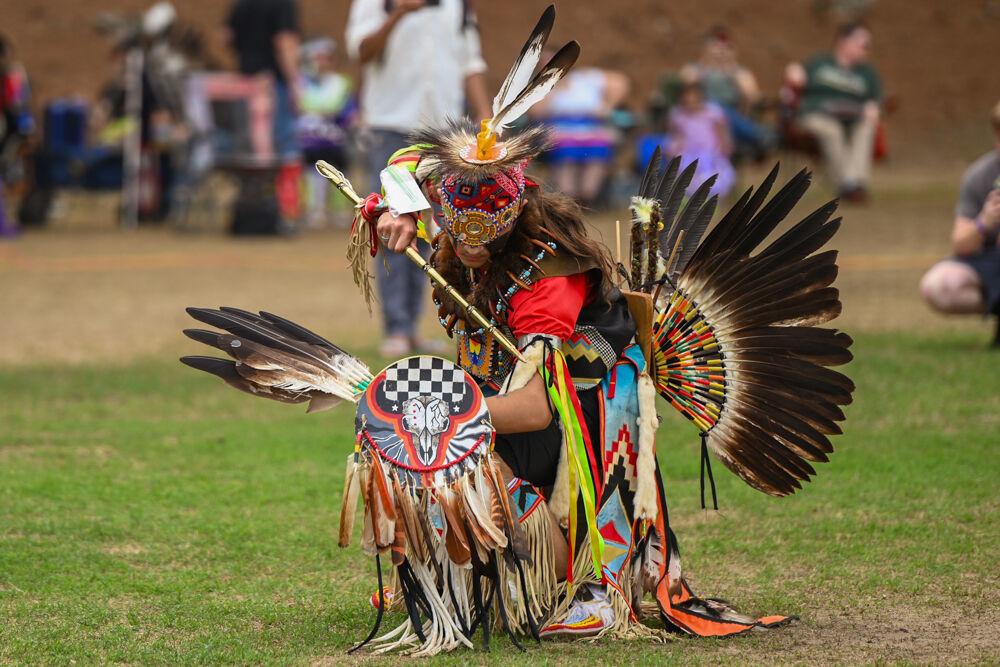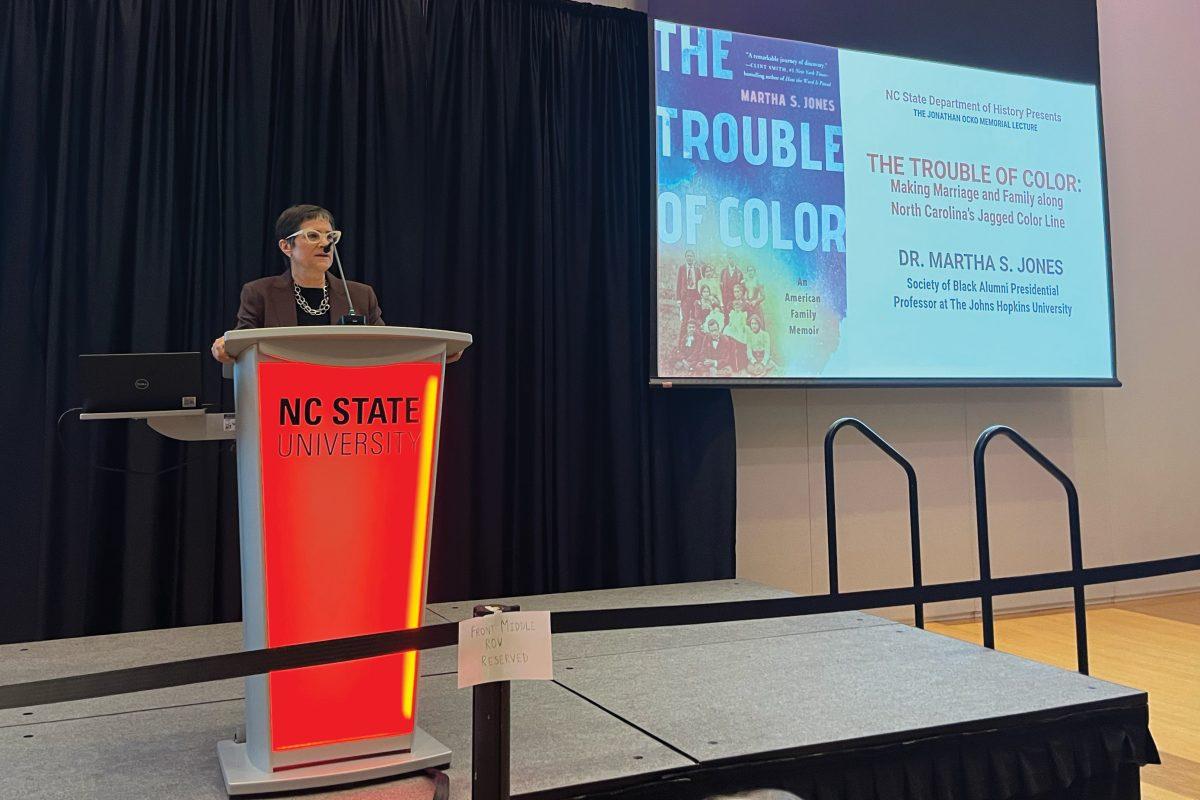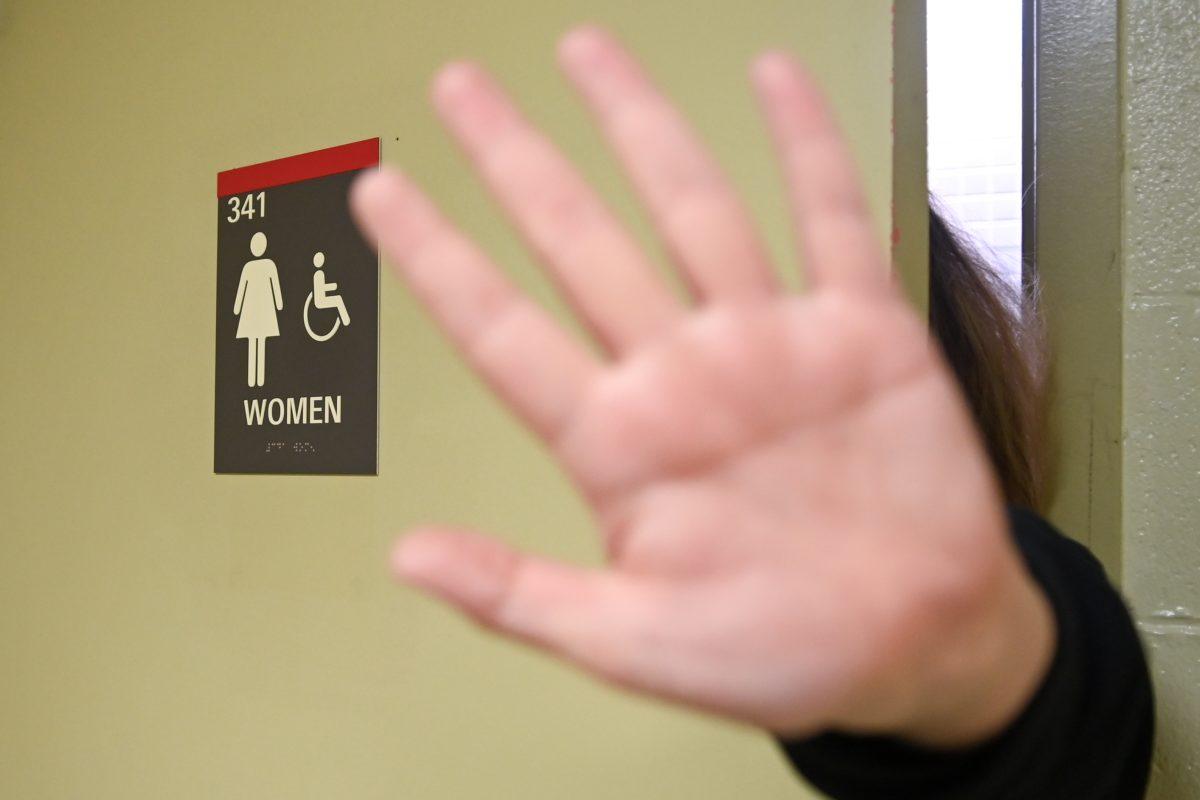Multicultural Student Affairs recently partnered with the Native American Student Association and American Indian Science and Engineering Society to create the 35th annual Pow Wow.
The event was held on Miller Fields, where NC State-affiliated organizations tabled, alongside several Native-affiliated Greek Life organizations on campus. 7 Directions of Service and Triangle Native American Society also had tables where guests could learn about their work.
Local artisans also had booths lining the area around the arena, a large circle of grass reserved for the rotating casts of dancers.
Trinity Locklear, a fourth-year studying criminology and president of the Native American Student Association and Eta Chapter of Alpha Pi Omega, said she was heavily involved in organizing the Pow Wow.
Locklear said the event was a way to give back to the community and the people that came before her, but also a space to set up future Native students for successful acceptance.
“It’s all about fellowship with each other, connection, education,” Locklear said. “At the end of the day, we love being out here. We love sharing our culture. We love teaching it. We love to see people wanting to learn about it.”
Dance is the cultural centerpiece of a Pow Wow. Dancers of all ages dressed in intricate regalia and took part in intertribal celebrations and friendly competitions while live music was played by local drumming groups, including the Warpaint Singers.
Joseph Guillemette, a fourth-year studying zoology and vice president of the Native American Student Association, contributed to organizing the Pow Wow. He expressed the importance of a Pow Wow creating community.
“To me, it’s just a really beautiful moment to fellowship and create community with my people,” Guillemette said. “It’s a big family reunion for us.”
Guillemette said the Pow Wow is a way to tell the world that indigenous people are still celebrating and practicing their distinct cultural traditions.
“It’s more an opportunity for us to invite the community, to educate with open arms, tell the world this is who we are,” Guillemette said. “We’re still here and we’re glad to have you guys.”
Alongside Native community members throughout North Carolina, there were also many non-Natives in attendance. NC State students were drawn from Carmichael Gym to Miller Fields by the drummers, then compelled to stay to watch the dancers or browse the booths.
Guillemette said it’s important for the campus to support events similar to the Pow Wow as it benefitted the entire community, not just natives.
“There are so many different people here who have come to learn, come to participate, to laugh and to enjoy the sense of community that we’ve helped establish here,” Guillemette said. “That, at the root of it, is what Pow Wows are for.”
Laura Rogers was a vendor at the Pow Wow selling colorful porcelain ceramics. She said she didn’t grow up very connected to her Lumbee identity and only found the community later in her life.
“I didn’t realize how much community was here,” Rogers said. “Now that I have kids, it’s really important that I give them what I didn’t have.”
Rogers said her ceramics aren’t what most would consider traditional native art, but she attends these events nonetheless.
“Native art is art made by a Native,” Rogers said. “So I bring something a little different to the Pow Wow.”
Caleb Hedgepeth, a member of the Haliwa-Saponi tribe and an alumnus in mechanical engineering, returned to dance at this year’s Pow Wow.
Hedgepeth’s regalia was red, white and orange and featured red handprints and the acronym MMWI, which stands for Missing and Murdered Indigenous Women.
The MMWI movement is in response to high rates of high rates of assault, abduction and murder of tribal members and a vast underreporting of these crimes by federal and state governments, typically affecting women.
Hedgepeth shared his connection to the movement and said it had been a large part of his life.
“My sister, she went to University of North Carolina-Chapel Hill 13 years ago, and she was killed while she was there,” Hedgepeth said. “It’s something important I thought I should put on my regalia.”
A dance was held in honor of these women, specifically those connected to the North Carolina community. Onlookers were encouraged to rise in remembrance.
Hedgepeth’s regalia was all handmade by family members and friends. He said, as a child, he would go to the Pow Wow in his hometown of Hollister every year and admire the dancers. Once he got the money for it, he got his own regalia and was taught to dance by a cousin.
“There’s a lot of people, probably at this school, who don’t even know natives are around anymore,” Hedgepeth said. “We’re still out here. We’re still kicking, putting on these Pow Wows, showing out, dancing. We’re still keeping our culture alive.”












